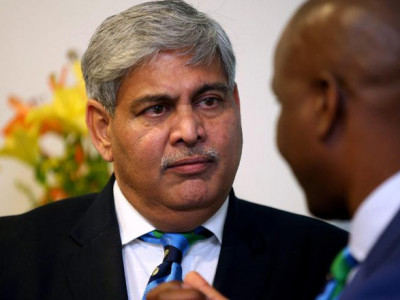(LANKAPUVATH | COLOMBO) – Sri Lanka’s headline inflation is expected to rise to 70 per cent in the coming months from the current level of 50%, the Governor of Central Bank of Sri Lanka, Dr. Nandalal Weerasinghe says.
His remarks came during a media briefing convened in Colombo to announce the Central Bank’s 5th monetary policy review for the year 2022.
The major concern and priority, from the Central Bank’s point of view, is to address inflation and inflation expectations going forward and bring it down to a reasonable level as soon as possible, Dr. Weerasinghe said. “If you look at the impact of inflation on segments of people, the first and hardest hit would be the poor and vulnerable.”
If inflation goes beyond control, to a hyperinflation situation, no one will be able to continue businesses, he added.
On Wednesday (July 06), the Monetary Board of the Central Bank further increased its policy interest rates with the aim of containing inflation pressures while ensuring macroeconomic stability in the period ahead.
Accordingly, the Standing Deposit Facility Rate (SDFR) and the Standing Lending Facility Rate (SLFR) were increased by 100 basis points 14.50 points and 15.50 per cent, respectively.
In arriving at that decision, the Monetary Board weighed the impact of tighter monetary conditions on overall economic activity including the micro-, small- and medium-scale enterprises and the financial sector performance among others against far-reaching adverse consequences of any escalation of price pressures across all sectors of the economy in the near term.
According to the Central Bank, in June headline inflation was at a record high of 54.6 per cent, driven mainly by inflation in groups such as transport, restaurant and hotel, food and non-alcoholic beverages. In the month of June, overall food inflation was recorded at 80.1 per cent, while non-food inflation was at 42.4 per cent.
The Central Bank noted that the major factors that contributed to the unprecedented high-level acceleration in headline inflation were the global energy and food price hikes and associated passthrough to domestic prices, domestic supply side disruptions along with the impact of the depreciation of the rupee, tax adjustments and the lagged impact of monetary accommodation.
In the near term, there will be some acceleration in headline inflation until the end of this year, the CBSL said, adding that however, a significant deceleration is expected starting from the beginning of the year 2023. Headline inflation will reach the medium-term level of 46 per cent range by 2025.
This will be facilitated by both global and domestic developments. Major global developments will include a downward trend of food inflation and oil prices, the Central Bank said further. This has to be supported by appropriate policy measures form the local authorities including monetary and fiscal tightening that will subdue aggregate demand pressures in the period ahead, it added.
Coordinated approach for crisis management that would ensure public support and ultimately help bring about normalcy to the country’s economy, the Central Bank noted.
The Central Bank reinstated that remedial policy measures adopted need to be complemented by timely and appropriate policy adjustments by the government, including the need for expeditious implementation of fiscal consolidation measures, alongside efficient and effective social welfare programs to support the vulnerable groups of the society.
With regard to the negotiations with the International Monetary Fund, the Central Bank said significant progress has been made towards reaching a staff-level agreement on the Extended Fund Facility (EFF) arrangement in the near term.
Meanwhile, it was revealed that the gross official reserves of Sri Lanka, at the end of June, were estimated at USD 1,859 million including the swap facility from the People’s Bank of China which is equivalent to the tune of USD 1.5 billion.




